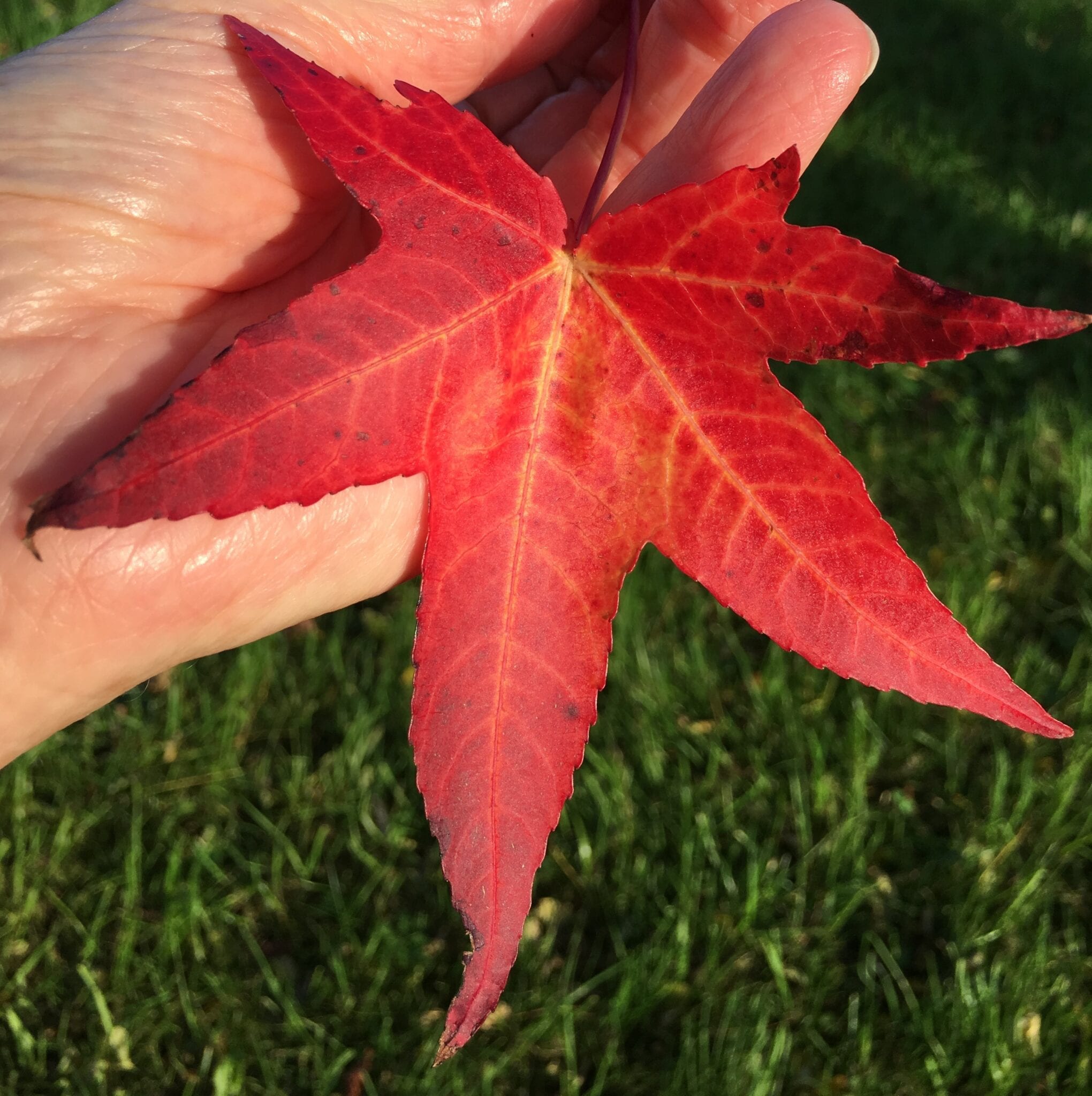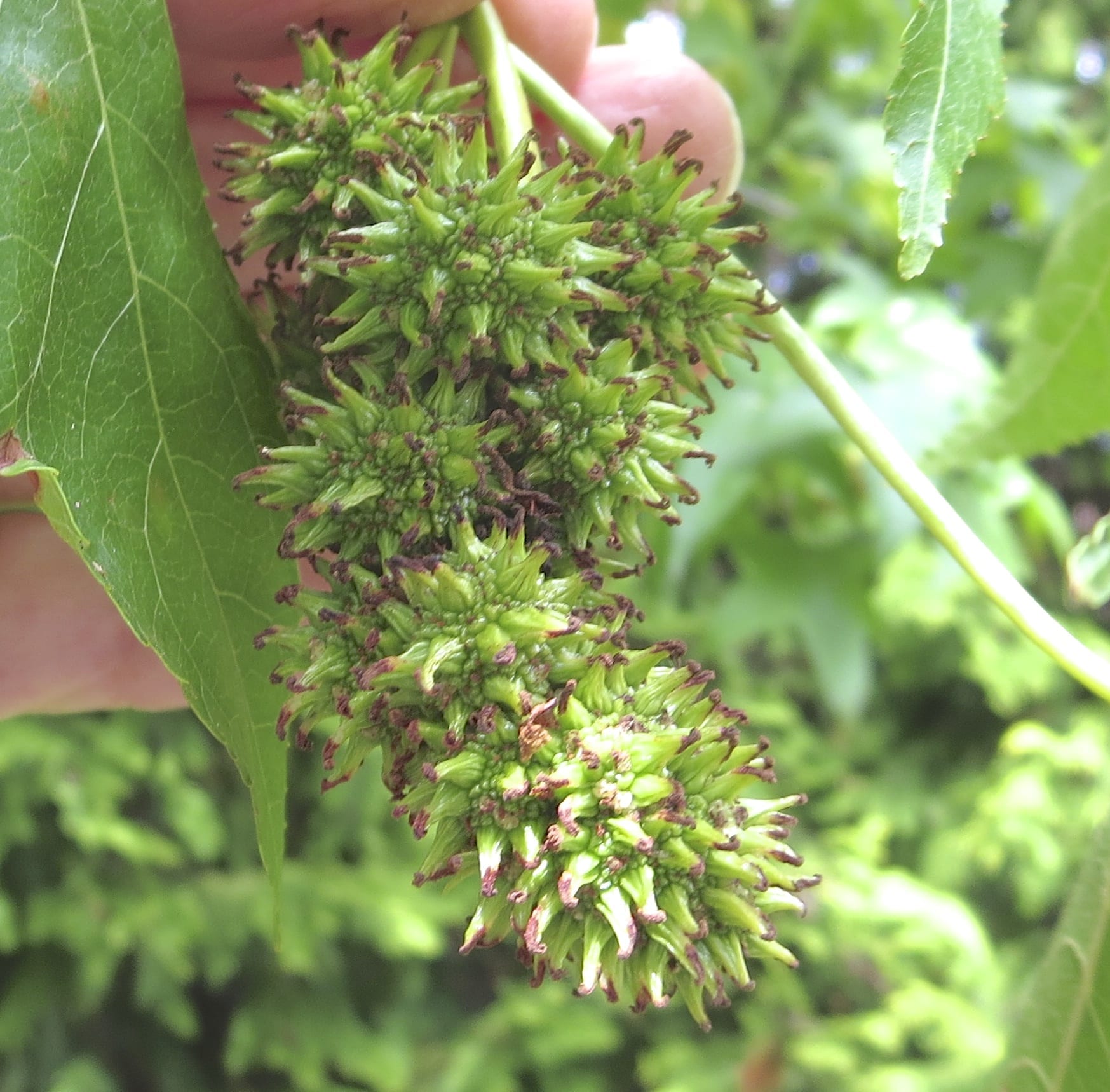Sweet Gum tree identification
The Sweet Gum Liquidambar styraciflua is a deciduous tree native to south-eastern USA and the cloud-forest mountains of Mexico and Central America. It was introduced to Britain in 1681. It is an ornamental tree planted in many parks and gardens in warmer areas. It has red autumn foliage and unusual fruit, similar to that of the London Plane.
Sweet Gum tree identification – 5-lobed leaves that turn red in autumn, fruits hang down in globular clusters, green then brown all winter
In its native habitat the tree was grown commercially for its aromatic gum, originally known as ‘liquid amber’, hence its scientific name. The gum that exudes when the bark is damaged was originally used as a medicine, but now the main source of the gum is from the Oriental Sweet Gum (Liquidambar orientalis), native to Turkey. This is called styrax and is used in medicines, perfumes and cosmetics. Friars Balsam, used as an inhalant, contains liquid styrax.
The leaf is 5-lobed and finely toothed but the leaves alternate along the shoot and are not opposite (as they are in Maples). The leaves are variable in shape, some are 3 -lobed and some do not have deeply cut leaves like this one
Close-up of a fruit ball, taken in August, showing the brown stigmas of many individual flowers. Each flower develops into a capsule which holds 1 or 2 seeds. There could be as many as 20 capsules in each fruit ball. The capsules open in September and the seeds are wind-dispersed or eaten by birds.












